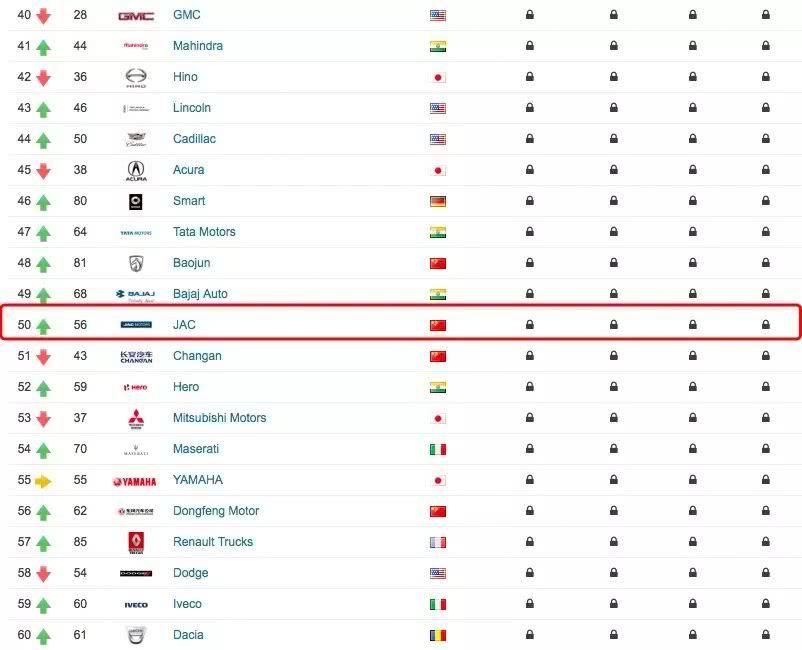The China Factor: Assessing Risks And Opportunities For Global Auto Brands

Table of Contents
Market Size and Growth Potential: A Double-Edged Sword
Unprecedented Market Size:
China represents the world's largest automotive market, presenting enormous sales potential for global brands.
- Massive consumer base: With a population exceeding 1.4 billion, China boasts a vast potential customer pool.
- Rising middle class: A rapidly expanding middle class fuels increased demand for personal vehicles, particularly in urban areas.
- Increasing vehicle ownership rates: While still lower than many developed nations, vehicle ownership rates are steadily climbing, driving market growth.
- Government support for the auto industry: The Chinese government actively supports the automotive sector through various policies and initiatives.
For example, in 2022, China's automotive market represented approximately 30% of global sales, dwarfing the US and other major markets. Industry analysts project continued growth, albeit at a potentially slower pace than previous years, fueled by ongoing infrastructure development and urbanization.
Intense Competition and Price Wars:
The sheer size of the Chinese auto market attracts intense competition, leading to price wars and pressure on profit margins.
- Numerous domestic brands: Established Chinese automakers like Geely, Great Wall Motors, and BYD are fiercely competitive, offering increasingly sophisticated and affordable vehicles.
- Strong international competition: Global auto giants vie for market share, resulting in a highly competitive landscape.
- Price sensitivity among consumers: Many Chinese consumers are price-conscious, making competitive pricing a crucial factor for success.
- Pressure to offer competitive pricing: This intense competition forces brands to continuously optimize costs and pricing strategies.
The price wars witnessed in recent years, particularly in the SUV and compact car segments, highlight the challenges faced by global brands trying to maintain profitability while competing with both domestic and international players.
Navigating Regulatory Hurdles and Government Policies
Stringent Emission Standards and Green Initiatives:
China's aggressive push for electric vehicles (EVs) and stricter emission regulations presents both challenges and opportunities.
- Investments needed for EV development and manufacturing: Meeting stringent emission targets requires significant investment in research, development, and manufacturing of electric and hybrid vehicles.
- Compliance with stringent emission standards: Automakers must ensure their vehicles meet increasingly stringent emission standards, impacting design and technology choices.
- Government subsidies for EVs: The government provides various subsidies and incentives to promote EV adoption, creating opportunities for brands that invest in this segment.
China's ambitious goals for EV adoption, including targets for market share and reduced carbon emissions, are driving rapid innovation and reshaping the automotive industry. Meeting these regulations requires significant upfront investment but also opens doors to substantial market share gains.
Localization Requirements and Joint Ventures:
Navigating complex regulations related to foreign ownership and localization requirements is critical for success.
- Need for joint ventures with local partners: In many cases, foreign automakers are required to establish joint ventures with Chinese partners to access the market.
- Complexities of intellectual property protection: Protecting intellectual property rights can be challenging in a complex regulatory environment.
- Regulatory approvals and licensing processes: The process of obtaining necessary approvals and licenses can be time-consuming and bureaucratic.
Many successful global brands have navigated these complexities through strategic partnerships and localization efforts, demonstrating the importance of understanding the specific regulatory landscape.
Understanding the Unique Chinese Consumer
Diverse Consumer Preferences and Buying Habits:
The Chinese market is incredibly diverse, demanding a tailored approach to product and marketing strategies.
- Varying preferences across regions: Consumer preferences vary significantly across different regions and demographics within China.
- Rising demand for luxury vehicles: A growing affluent population is driving demand for luxury and premium vehicles.
- Importance of digital marketing and online sales channels: E-commerce and digital marketing play crucial roles in reaching Chinese consumers.
Understanding these diverse preferences is crucial for tailoring product offerings and marketing messages to resonate with specific consumer segments. Ignoring regional nuances can lead to marketing failures and missed opportunities.
Brand Perception and Cultural Nuances:
Building trust and adapting to cultural sensitivities are paramount for success in the Chinese market.
- Importance of a strong brand reputation: Building a positive brand image and maintaining a strong reputation is crucial for gaining consumer trust.
- Tailoring marketing campaigns to resonate with cultural values: Marketing materials must be culturally sensitive and relevant to avoid alienating potential consumers.
- Effective communication strategies: Clear and effective communication is vital for building relationships with consumers, partners, and regulatory bodies.
Successful brands have invested heavily in understanding Chinese culture and adapting their communication strategies accordingly, highlighting the importance of cultural sensitivity in building brand loyalty.
Supply Chain Management and Manufacturing Challenges
Global Supply Chain Disruptions:
Managing the complexities of global supply chains, including potential disruptions and geopolitical risks, is crucial for success in China.
- Risks associated with reliance on global supply chains: Global supply chains are vulnerable to disruptions caused by geopolitical events, natural disasters, and other unforeseen circumstances.
- Potential for trade wars or sanctions: Trade tensions and potential sanctions can significantly impact the availability and cost of imported components and raw materials.
- Importance of diversified sourcing strategies: A diversified supply chain approach helps mitigate risks and ensures business continuity.
Recent global events have highlighted the importance of resilient and diversified supply chains, underscoring the need for automakers to adapt their sourcing strategies to manage potential disruptions.
Local Manufacturing and Infrastructure:
Leveraging local manufacturing capabilities and adapting to the nuances of the Chinese infrastructure is key to long-term success.
- Benefits of local production: Local manufacturing can reduce costs, improve responsiveness to market demands, and enhance brand image.
- Considerations for factory setup and logistics: Setting up manufacturing facilities requires careful consideration of logistics, infrastructure, and regulatory compliance.
- Understanding labor laws and regulations: Compliance with Chinese labor laws and regulations is essential for smooth operations.
The decision to manufacture locally or import components involves careful evaluation of various factors, including cost, logistics, and regulatory compliance.
Conclusion
The "China factor" presents both significant risks and unparalleled opportunities for global auto brands. Successfully navigating this complex market requires a deep understanding of its size, regulations, consumers, and supply chain dynamics. By carefully assessing these aspects and adapting strategies accordingly, global auto brands can unlock the enormous potential within the Chinese automotive market and achieve sustainable growth. Don't miss out on this vital market; begin your strategic planning around the China factor today.

Featured Posts
-
 10 Unforgettable Film Noir Movies You Need To See
May 10, 2025
10 Unforgettable Film Noir Movies You Need To See
May 10, 2025 -
 French Europe Minister Promotes Nuclear Energy Sharing
May 10, 2025
French Europe Minister Promotes Nuclear Energy Sharing
May 10, 2025 -
 Agression Au Lac Kir A Dijon Bilan Et Circonstances
May 10, 2025
Agression Au Lac Kir A Dijon Bilan Et Circonstances
May 10, 2025 -
 Stock Market Today Sensex And Nifty Surge Adani Ports Gains Eternal Declines
May 10, 2025
Stock Market Today Sensex And Nifty Surge Adani Ports Gains Eternal Declines
May 10, 2025 -
 Thailands Bot Governor Hunt Economic Uncertainty And Tariff Impacts
May 10, 2025
Thailands Bot Governor Hunt Economic Uncertainty And Tariff Impacts
May 10, 2025
